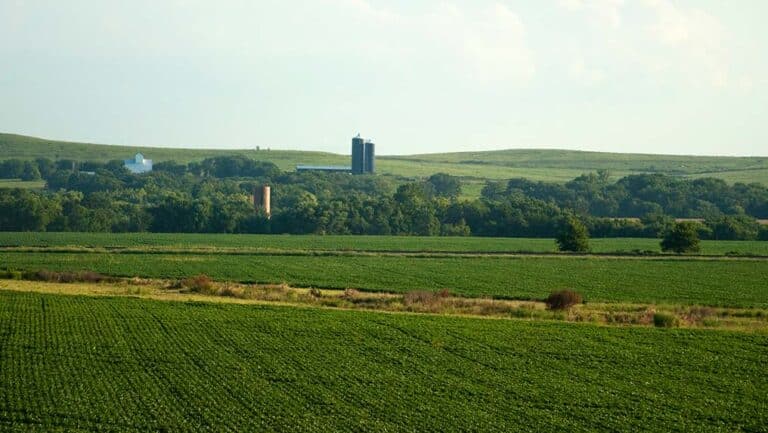Top Five Consumer Behavior Shifts in 2020
Farmers and ranchers have shown remarkable tenacity as they’ve adapted to historic disruption.
This year has been one filled with exceptional events and challenges for American farmers, ranging from logistical bottlenecks on our nation’s food supply to a global pandemic impacting the lives of more than 13 million Americans.
Through this unprecedented year, farmers and ranchers have continued to provide for the American people, shifting their strategies to meet the needs of consumers in a rapidly changing world. While farmers are experienced at navigating a commonly volatile market, 2020 has brought fluctuation to consumer behavior unlike anything seen in decades.
In this article, we will discuss the five biggest consumer trends we’ve seen in 2020 for U.S. agriculture as well as four specific marketing strategies that can help farmers and ranchers adapt their operations to these shifting behaviors.
Top Five Consumer Trends in a COVID-19 World
#1: Bulk Purchasing
As we once again maneuver through a COVID-19 surge, pantry stocking behaviors have begun to return at a retail level as it hit us full force earlier in the year. While commodities like toilet paper were treasure finds for a time, food remained in abundant supply. Even so, potential lockdowns looming sparked a wave of hoarding behavior that left shelves looking sparse and grocers working overtime to keep them stocked. The bulk purchasing trend has softened but still remains, as many consumers have limited their trips to the grocery stores. More than half of consumers report feeling anxious about in-store shopping, leading us into another popular consumer trend we’ve seen in 2020.
#2: Increased Use of E-Commerce
According to a recent survey, 53 percent of consumers reported that they have bought groceries online during the COVID-19 pandemic. Of this majority, an overwhelming 93 percent said they plan to continue doing so post-pandemic. This “click and collect” consumer trend is one of the most prominent consumer behaviors recorded in 2020 and surveys suggest it’s a trend that will likely grow over time. In fact, it’s been projected that an estimated 25 percent of total retail sales will be done through e-commerce platforms within the next five years. While the use of e-commerce for groceries was nothing new, the COVID-19 pandemic was the tipping point to push it into mainstream consumer trends and will likely be here to stay in a post-pandemic world.
#3: Cooking at Home
Because of stay-at-home orders and an increase in Americans working remotely, consumers have had more time to explore time-intensive and health-centric recipes. Prior to COVID-19, U.S. consumers spent more than $900 billion on food away from home while at-home food purchases did not reach above $800 billion. According to the USDA Economic Research Center, eating-out expenditures declined 28 percent in March 2020 compared to a year prior. The same report found that at-home food purchases were just over 19 percent higher during the same time.
#4: Fresh and Organic
The first half of 2020 trended towards staple, long-lasting produce purchases—including potatoes, onions, and carrots. In fact, retail potato dollar sales in the U.S. shot up 31 percent between March and June. Consumer buying behavior shifted slightly in the second half of the year as lockdown regulations eased and consumers gravitated towards superfood items—such as ginger, turmeric, and kale—to build their immune systems. As consumers focus more energy on eating healthy, organic produce purchases continue to grow in popularity. One financial expert estimated that organic lettuce, carrots, and herbs will soon exceed sales of their conventional counterparts by 50 percent and total organic vegetables will make up 33 percent of total vegetable sales by 2030.
#5: Packaged Produce
Prior to the pandemic, consumers were making more of an effort to reduce one-time plastic use and opting for fresh produce without the use of packaging. The COVID-19 pandemic pivoted this trend as consumers veered towards packaged produce under the perception that it was safer to touch and handled less by others. Pre-packaged salads were among the most popular consumer purchases and experienced a 33 percent spike in mid-March. This renewed demand for packaged produce has ignited the discussion of sustainable packaging that is recyclable, compostable, and biodegradable. However, most existing sustainable packaging options would mean higher prices for consumers during a time when many are reigning in their spending.
Four Marketing Strategies to Adapt to Consumer Behavior
As we wrap up the final weeks of 2020, there are several marketing strategies farmers and ranchers can implement to adapt their operation to shifting consumer demand.
Direct-to-Consumer
COVID-19 has pushed many consumers to shop for their food beyond crowded grocery stores with long waiting lines. Many direct-to-consumer business models have thrived during this period and are especially worth considering for those who currently rely heavily on restaurant sales. Direct-to-consumer models include community-supported agricultural operations, e-commerce platforms, monthly subscriptions, or farmers’ markets. Cutting out the logistical middle-man and establishing relationships with consumers in your community can be an excellent hedge against food supply bottlenecks in the future.
Contactless Delivery
Another type of direct-to-consumer model that has excelled in a pandemic-driven world is food delivery options that do not require personal contact. This limits potential COVID-19 exposure for both you, your workers, and the consumers you feed. While regular deliveries and curbside pickup options are more appealing to COVID-conscious consumers, it can also create higher operational costs–from shipping fees to transportation labor–that should be considered prior to implementation.
Build a Brand Story
Whether there’s a pandemic happening or not, there is no better way to create a loyal consumer base than building a story within your company brand. Consumers are increasingly using their voice through their dollar and are ready to back a brand with a purpose beyond just making money, but this purpose must be shared in order for them to make that decision. Few businesses hold a wealth of inspirational stories than that of American family farm operations.
What is the family legacy that exists within the soil of your land? What are your company values? In what ways have you given back to the community? How are you working towards a sustainable future for agriculture? All are questions to ask yourself when building your brand story.
Embrace Social Media Platforms
Once you’ve established the story behind the operation, now it’s time to share it. Social media is a low-cost, high-overhead tactic that is being embraced more and more in an increasingly virtual world. There is no better way to stay in contact with current customers while simultaneously expanding your reach to new ones.
Supporting the Future of Agriculture in a Changing World
No matter what the future holds, consumers have to eat. They might pivot their purchase choices and adapt to current events, but the need for sustenance will never disappear.
As masters of adaptation, American farmers and ranchers have maintained the food security of our great nation with astounding resilience in the face of unpredictable adversity. Through these challenges, AgAmerica has been inspired by this selfless dedication and worked overtime to ensure these farmers and ranchers are getting the resources they need to get the job done.
Whether it’s customized financing solutions or educational resources to support long-term operational success, we’re here for you. To learn more about working with a lender singularly focused on agricultural finance, contact us today.






